The Reason Why NBC’s Hannibal Found Such A Huge Female Audience Is Because Fuller’s/Mads’ Lecter
The reason why NBC’s Hannibal found such a huge female audience is because Fuller’s/Mads’ Lecter is not a male power fantasy: he’s a female power fantasy.
He’s not a broody snippy git whose appeal is assumed apriori and who in real life would drive away absolutely everyone he met (e.g. any sad manboy ever trotted out as a lead by Moffat).
He’s not an “aspirational” over-muscled hulk.
He’s not a fighter for ‘truth’ or ‘justice’ for whom bodies are just collateral on his path to heroic self-actualization
This Hannibal is the Head Bitch In Charge.
He is independent to the n-th degree. He lives to please himself and no one else. He is fabulous. He shamelessly geeks out over obscure and refined pastimes and shares them with friends. He is the Queen Bee of his social circle. He takes any excuse to treat himself, but he also has perfect self-discipline: gym is not optional. His time-management skills are superhuman. He can decorate and keep a house like Martha Stewart, hold down several jobs, and practice multiple hobbies daily.
(And what are his hobbies, aside from slaughter? Cooking, foreign languages, drawing, playing musical instruments and composing. And clearly clothes shopping. He is probably on first-name basis with the best tailors and cordwainers in town. Contrast with Will, whose hobbies are stereotypically masculine: fixing motor boats, fishing, playing outside with his dogs.)
Hannibal is not young, but he wears his age gracefully. He regrets nothing, like an embodiment of Piaf’s “Non, rien de rien”. His hair is perfect because he clearly spends time in front of the mirror styling it, not because the show’s producer wanted him to look effortlessly cool (*cough*Sherlock*cough*).
He never, ever loses his temper in public, as if he knows that the world/audience will not fawn over him for trying to assert himself through vulgarity, posturing, or volume - all the typical ways in which men like to hijack and dominate conversations.
He can dispatch a creepy stalker like Franklyn with a single neck twist, with no consequences. A sweet fantasy, indeed. If only real life stalkers were so easy to dispose of.
Hannibal’s victims - those who were not killed in self-defense or as ‘murder presents’ for Will - tend to fall into two categories: other killers who act like *they* are the baddest bitches in town (Gideon, Tobias, the mural guy) and people who disrespect him. Of those, there are surprisingly many. In fact, it seems like the very esteemed pillar of Baltimore society Dr. Lecter goes through life constantly being dissed. This is rather puzzling. Hannibal is a tall good-looking white gentleman who speaks like a professor, dresses like a count, and drives a Bentley that costs more than people’s houses. And yet something about him prompts many people, especially in the service industry, to be rude to him.
But he doesn’t confront these “pigs” (already a gender-loaded term, even though it gets applied to victims of both sexes) in a head-on, macho way. Instead, he bides his time and dispatches his prey through some kind of a sneak attack. His preferred philosophy of fighting is “feminine”: assume your opponent is physically stronger and don’t try to out-muscle them. (Even if his opponent is much smaller and weaker, like Chilton.) Subterfuge, ambush, sedatives - Hannibal wins his fights by fighting on his own terms. Nevertheless, if a man should come at him with a weapon, he defends himself with perfect adroitness: Tobias, Jack, Mason’s henchmen, etc.
Even some aspects of Hannibal’s relationship with Will would make more sense if he were female. In particular the issue of, well, issue. Hannibal is clearly Not Okay with Will having children with anyone but him. This is somewhat odd for a man, especially one who seems to have never wanted kids before this. But it makes sense for a woman just past menopause: fate finally delivered her dream partner, but it’s too late to have a family. And so Hannibal sets up the dominoes for Margot’s pregnancy to be terminated practically as soon as he learns of it. If he can’t have Will’s kids, then no one can. They may be adopted, but they have to be *theirs*.
It also makes sense that when Hannibal discovers Will’s treachery, he goes full Medea on him. Killing the man’s children is common to cultural narratives of wronged women all over the world. It’s often the only leverage they have over the men, the only way they can exact revenge. Hannibal can take much more than Abigail from Will, but she is the only thing he can take that truly matters.
Bonus exercise for the reader: imagine a version of the show where everything is the same, but Hannibal is played by Meryl Streep.
Or even just swap Mads Mikkelsen & Gillian Anderson places. Let her be Hannah Lecter; let him be Dr. Bennett Du Maurier, her wary shrink. Both the characterization and plot still work almost 100%.
More Posts from Wierduff and Others
So uh….some dude apparently recreated Adobe Photoshop feature-for-feature, for FREE, and it runs in your browser.
Anyway, fuck Adobe, and enjoy!
hello, i hope im asking the right person here!! Have you perhaps done a post on types of injuries a charcter can have? Whether it be facial injuries or elsewhere!
Many thanks! :)
Writing References: Injuries
Amnesia ⚜ Bites & Stings ⚜ Bruises ⚜ Drowning ⚜ Fractures
Frostbite ⚜ Infected Gunshot Wound (GSW) ⚜ Knife Injuries
Mechanism of Injury (Head-on collision; GSW; stabbings)
Hostile Environments (Cold; heat; oxygen deprivation; vacuum exposure)
Reactions to Injury ⚜ Scars
Types & Levels of Pain ⚜ Importance of Pain
Wounds ⚜ Wound Care ⚜ Writing Realistic Injuries
Hi, here are some previous posts related to injuries. Let me know if you were looking for something more specific. Hope this helps with your writing :)
More: References ⚜ Writing Resources PDFs
cooking while chronically ill
baking with arthritis or other chronic hand pain
living with chronic migraines
adhd meal plan
chronic pain tips
getting yourself to eat

someone explain the jewish holidays to me like i'm 5 years old
bad representation in the pjo-verse: a masterpost
(disclaimers under the cut)
RACISM/OFFENSIVE STEREOTYPING
general issues: 1 // 2 // 3 // 4 // 5 // 6 // 7
SAMIRAH:
- arranged marriage: 1 // 2 // 3 // 4
- hijab: 1 // 2
- response to rick’s post: 1 // 2
- nickname “sam”: 1 // 2 // 3
HAZEL:
- general issues: 1 // 2 // 3 // 4 // 5 // 6
- physical appearance: 1 // 2 // 3 // 4 // 5 // 6 // 7 // 8 // 9
- fr*zel: 1
- white/lightwashing: 1
- (bonus: fancasts/faceclaims/art references)
PIPER:
- general issues: 1 // 2 // 3 // 4
- physical appearance: 1 // 2 // 3 // 4 // 5 // 6 // 7 // 8 // 9 // 10 // 11
- relationship with tristan: 1
- cornucopia: 1
- response to rick’s post: 1 // 2 // 3 // 4
- (bonus: resources masterpost)
SADIE:
- whitewashing: 1 // 2 // 3 // 4 // 5 // 6 // 7 // 8 // 9
LEO: 1 // 2 // 3 // 4 // 5
REYNA: 1 // 2
MALLORY: 1 // 2 // 3
PAOLO: 1
THOMAS JEFFERSON JR: 1 // 2
latine rep: 1 // 2
eastern asian rep: 1 // 2 // 3 // 4
indian rep: 1
southwestern asian rep: 1 // 2
antisemitism: 1 // 2 // 3
- LAVINIA: 1 // 2
the monsters and racial coding: 1 // 2 // 3 // 4
the gods and dna: 1 // 2 // 3 // 4
camp jupiter and the confederacy: 1
cultural appropriation: 1 // 2
white supremacy: 1
racism centric post with additions on leo + paolo + antisemitism: 1
ANTI-LGBTQ+
- general issues: 1 // 2
- nico’s romanticized forced outing: 1 // 2
- lesbophobia: 1 // 2 // 3 // 4 // 5 // 6
- ace/aro rep: 1 // 2 // 3 // 4
- transphobia: 1 // 2 // 3 // 4
ABLEISM
- general issues: 1 // 2 // 3 // 4 // 5 // 6 // 7 // 8 // 9
- r-slur: 1
- clovis: 1 // 2
- solangelo: 1 // 2
ABUSE
- leo: 1 // 2 // 3
BIG AGE GAPS
- general issues: 1
- annabeth and luke: 1
- black female characters: 1 // 2
- female characters: 1
- apollo and thalia: 1
MISOGYNY/SEXISM
1 // 2 // 3 // 4 // 5 // 6 // 7 // 8
FATPHOBIA
1 // 2
ACNE
1 // 2
UNDERAGE ALCOHOLISM
1
Keep reading
i’ve been doing my homework on how to break into a writing career and honestly. there’s a Lot that i didn’t know about thats critical to a writing career in this day and age, and on the one hand, its understandable because we’re experiencing a massive cultural shift, but on the other hand, writers who do not have formal training in school or don’t have the connections to learn more via social osmosis end up extremely out of loop and working at a disadvantage.
Every artist who sees this post should do the following:
- Watch the video.
- Follow the instructions
- Reblog
I can’t stress you enough about how important these exercises are for your drawing hand. You don’t wanna get CTS of Tendonitis and similar stuff that will prevent you from making art or even hold a pencil.
I stumbled across this blog on accident, but I am intrigued and I have to ask: is there a specific best place to read the Ulster Cycle in English?
yo! welcome to the niche corner
okay so first up the “ulster cycle” is a modern term given to a huge and disparate body of texts, some of which connect obviously to each other and some of which don’t but happen to have some of the same characters. some retellings attempt to rewrite the whole thing into a single coherent narrative but those are, by necessity, retellings rather than translations since that isn’t actually... what it is.
not all the texts have been translated but most of the big ones have and some of them even have multiple translations which is great
the big, central text and the one i reference most often is táin bó cúailnge, which used to get translated as “the cattle-raid of cooley” until thomas kinsella came along and was like “hey, maybe people would take us more seriously if we called it the táin”, so that’s what it generally gets called now. kinsella’s translation is good, as is ciarán carson’s. carson’s is a bit cheaper and personally i prefer it for general reading because of the style, but kinsella’s has the big advantage that he includes a bunch of the other stories which relate to the táin
another useful book is gantz’s early irish myths and sagas, which includes a bunch of texts from the so-called “ulster” and “mythological” cycles (again, modern terms). i would... ignore 99% of what gantz says in his little textual introductions because a lot of it is now quite outdated scholarship, but the translations themselves are solid enough
there are some more texts translated in the celtic heroic age by john carey and john koch but these are more academic translations and don’t really try and smooth over the syntax or any gaps in the manuscript for a modern audience, so that’s only if you’re really keen
you can also find a lot of the texts in translation at CELT, the Corpus of Electronic Texts (whoever came up with that acronym must have been so proud of themselves) -- these are generally older translations but hey, they’re free and they’re online and a lot of them are very accurate, even if that can make them a bit less readable
@finnlongman makes videos about medieval irish lit and has retold several ulster cycle texts on youtube here
hope this helps! you will also find various retellings out there, many of them victorian or early 20th century (lady gregory, eleanor hull etc) but like i said, if you want the texts in their most “accurate” form, these are the best places to start
[please note that links are amazon uk affiliate links, if you buy via those i get a teeny tiny commission, but actually would advocate supporting your local bookshops if possible, they’re mostly there for illustrative purposes]
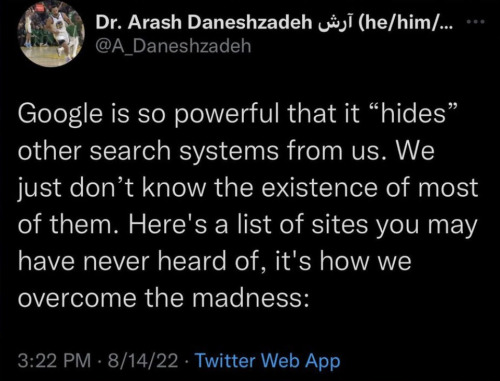
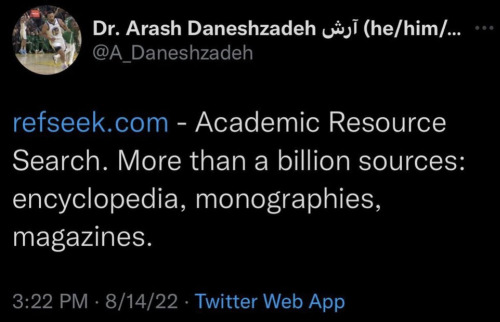
refseek.com
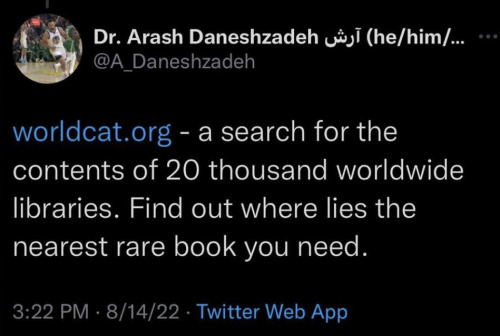
www.worldcat.org/

link.springer.com
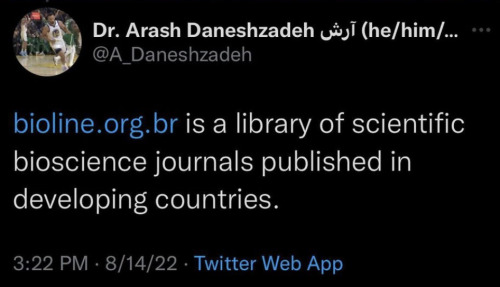
http://bioline.org.br/
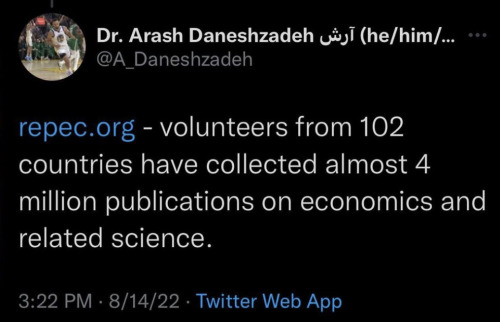
repec.org

science.gov

pdfdrive.com
-
 burnt-kloverfield liked this · 1 week ago
burnt-kloverfield liked this · 1 week ago -
 hauscrashburn reblogged this · 1 week ago
hauscrashburn reblogged this · 1 week ago -
 alice-inthedark reblogged this · 1 month ago
alice-inthedark reblogged this · 1 month ago -
 phan-r liked this · 1 month ago
phan-r liked this · 1 month ago -
 69gayworm69 liked this · 1 month ago
69gayworm69 liked this · 1 month ago -
 saintofbottles reblogged this · 2 months ago
saintofbottles reblogged this · 2 months ago -
 saintofbottles liked this · 2 months ago
saintofbottles liked this · 2 months ago -
 treeeeeeefrog liked this · 2 months ago
treeeeeeefrog liked this · 2 months ago -
 evil-incarnate-good-incognito liked this · 2 months ago
evil-incarnate-good-incognito liked this · 2 months ago -
 nreblogsthings reblogged this · 2 months ago
nreblogsthings reblogged this · 2 months ago -
 alyindreamland reblogged this · 2 months ago
alyindreamland reblogged this · 2 months ago -
 alyindreamland liked this · 2 months ago
alyindreamland liked this · 2 months ago -
 i-know-how-my-story-ends liked this · 2 months ago
i-know-how-my-story-ends liked this · 2 months ago -
 benndragon reblogged this · 2 months ago
benndragon reblogged this · 2 months ago -
 benndragon liked this · 2 months ago
benndragon liked this · 2 months ago -
 clockworkcanary reblogged this · 3 months ago
clockworkcanary reblogged this · 3 months ago -
 esthira liked this · 3 months ago
esthira liked this · 3 months ago -
 thesleepingfaun liked this · 3 months ago
thesleepingfaun liked this · 3 months ago -
 3vitasofxia liked this · 3 months ago
3vitasofxia liked this · 3 months ago -
 ipadhannibal reblogged this · 3 months ago
ipadhannibal reblogged this · 3 months ago -
 aliatravel liked this · 3 months ago
aliatravel liked this · 3 months ago -
 seahoerse reblogged this · 4 months ago
seahoerse reblogged this · 4 months ago -
 seahoerse liked this · 4 months ago
seahoerse liked this · 4 months ago -
 longlivethekingofthishologram reblogged this · 4 months ago
longlivethekingofthishologram reblogged this · 4 months ago -
 longlivethekingofthishologram liked this · 4 months ago
longlivethekingofthishologram liked this · 4 months ago -
 antarcticmagick liked this · 4 months ago
antarcticmagick liked this · 4 months ago -
 larniell liked this · 4 months ago
larniell liked this · 4 months ago -
 doofsss reblogged this · 5 months ago
doofsss reblogged this · 5 months ago -
 doofsss liked this · 5 months ago
doofsss liked this · 5 months ago -
 bokvarginna reblogged this · 5 months ago
bokvarginna reblogged this · 5 months ago -
 sacrificial-white-lamb liked this · 5 months ago
sacrificial-white-lamb liked this · 5 months ago -
 hello-marsh-mel2 liked this · 5 months ago
hello-marsh-mel2 liked this · 5 months ago -
 mrmcawezomesauce liked this · 5 months ago
mrmcawezomesauce liked this · 5 months ago -
 anna55ao5 liked this · 6 months ago
anna55ao5 liked this · 6 months ago -
 alyindreamland reblogged this · 6 months ago
alyindreamland reblogged this · 6 months ago -
 icepandawarrior liked this · 6 months ago
icepandawarrior liked this · 6 months ago -
 amoonnearsaturn liked this · 6 months ago
amoonnearsaturn liked this · 6 months ago -
 akarimystuff liked this · 6 months ago
akarimystuff liked this · 6 months ago -
 zzlo liked this · 6 months ago
zzlo liked this · 6 months ago -
 coufurim liked this · 6 months ago
coufurim liked this · 6 months ago -
 imnotevilimjustwrittenthatway reblogged this · 7 months ago
imnotevilimjustwrittenthatway reblogged this · 7 months ago -
 hellortexa liked this · 7 months ago
hellortexa liked this · 7 months ago -
 suppppsblog liked this · 7 months ago
suppppsblog liked this · 7 months ago -
 eveningjaye reblogged this · 7 months ago
eveningjaye reblogged this · 7 months ago -
 eveningjaye liked this · 7 months ago
eveningjaye liked this · 7 months ago -
 mebells liked this · 7 months ago
mebells liked this · 7 months ago -
 akajustmerry liked this · 7 months ago
akajustmerry liked this · 7 months ago
